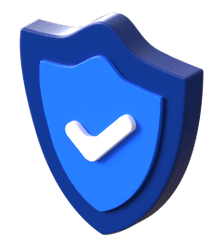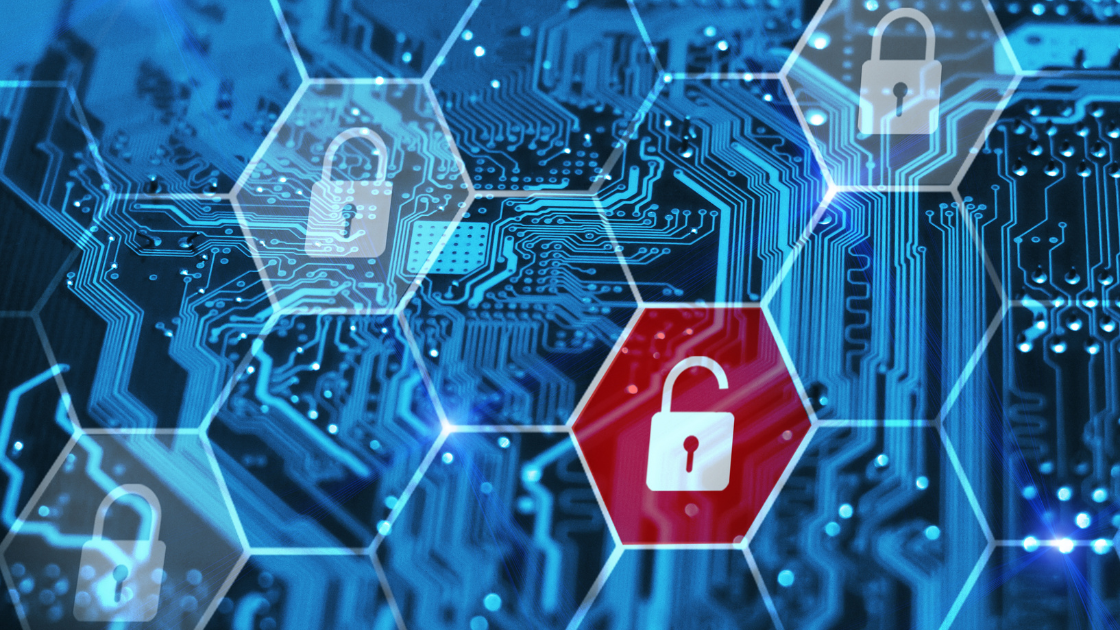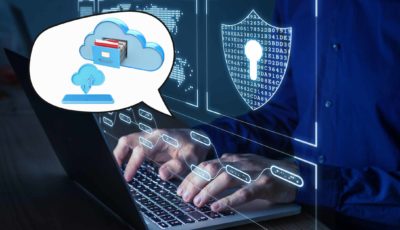SOC as a Service is a modern cybersecurity solution that outsources the management of a Security Operations Center. It provides continuous threat monitoring, incident response, and expert security, enabling organizations to enhance their defenses and efficiently mitigate cyber threats. But why is it of any importance to you?
With the continuous advancement of technology, new vulnerabilities and threats emerge. The proliferation of the Internet, cloud computing, and the Internet of Things (IoT) has created a larger attack surface for cybercriminals to exploit.
According to Ponemon Institute’s State of Cybersecurity Report, 66% of SMEs have experienced an attack in the last 12 months. This is where security measures like SOC as a Service step in!
In this article, we will discuss the importance, process, benefits, and challenges of the above in detail.
Action Points
- SOC as a Service (SOCaaS) is a cloud-based security model providing comprehensive security functions via a subscription.
- The importance of SOC as a Service lies in threat monitoring, incident detection, response, and data analysis.
- It involves outsourcing SOC responsibilities to a provider for continuous monitoring and incident response.
- The benefits of Adopting SOC as a Service include cost-effectiveness, access to expertise, scalability, 24/7 monitoring, and proactive threat detection.
What is SOC as a Service?
As discussed above, SOC as a Service (SOCaaS) is a security model where a third-party vendor operates and maintains a fully managed SOC on a subscription basis via the cloud. It provides all security functions performed by a traditional, in-house SOC, including network monitoring, log management, threat detection and intelligence, incident investigation and response, reporting, and risk and compliance
On the other hand, a Security Operations Center (SOC) is a team within an organization tasked with identifying, countering, looking into, and responding to threats.
Why is SOC as a Service Important?
1. Threat Monitoring:
The primary role of a SOC is to continuously monitor an organization’s network and systems for signs of security threats including monitoring network traffic, logs, and security events.
2. Incident Detection:
When suspicious activities or potential security incidents are identified, the SOC is responsible for detecting and verifying these incidents. This may involve investigating unusual patterns, behaviors, or anomalies.
3. Incident Response:
Once an incident is confirmed, the SOC initiates a well-defined response process to contain, mitigate, and remediate the threat. This may involve isolating affected systems, patching vulnerabilities, and coordinating with other teams or external entities.
4. Log and Data Analysis:
SOCs analyze logs and security data from various sources to identify potential threats and vulnerabilities by correlating data to uncover sophisticated attacks and vulnerabilities that might not be apparent when viewed in isolation.
5. Security Tool Management:
SOCs manage and maintain security tools such as intrusion detection systems, firewalls, and security information and event management (SIEM) systems to ensure they are effectively protecting the organization.
6. Continuous Improvement:
SOC teams are constantly learning and adapting to the evolving threat landscape. They assess their own performance, identify areas of improvement, and refine their procedures and technologies accordingly.
Why is Astra Vulnerability Scanner the Best Scanner?
- Runs 8000+ tests with weekly updated scanner rules
- Scans behind the login page
- Scan results are vetted by security experts to ensure zero false positives
- Integrates with your CI/CD tools to help you establish DevSecOps
- A dynamic vulnerability management dashboard to manage, monitor, assign, and update vulnerabilities from one place.
- Helps you stay compliant with SOC2, ISO27001, PCI-DSS, HIPAA, etc.
- Integrates with Slack and Jira for better workflow management
- Trusted by the brands you trust like Agora, Spicejet, Muthoot, Dream11, etc.

How Does SOC as a Service Work?
SOC as a Service is a cloud-based subscription model that encompasses managed threat detection and response while incorporating key SOC functionalities. Here’s how SOCaaS operates:
Step 1: Outsourcing the SOC:
Organizations delegate their SOC responsibilities to a managed service provider (MSP), a cloud-based solution, or a hosted virtual SOC. In doing so, the independent vendor assumes full responsibility for the people, processes, and technologies required to deliver these services, ensuring 24/7 support and cybersecurity expertise.
Step 2: Security Event Monitoring and Analysis:
It offers continuous monitoring of an organization’s network to detect and respond to security threats swiftly. It gathers and analyzes log data from diverse sources, effectively pinpointing potential security threats. Utilizing advanced threat detection tools and intelligence resources, SOCaaS can identify and address security threats in real time.
Step 3: Incident Response and Management:
It includes comprehensive incident investigation and response services, enabling organizations to swiftly contain and remediate security incidents. It also aids organizations in achieving compliance with industry regulations and standards like HIPAA, PCI DSS, and GDPR.
Step 4: Continuous Improvement and Optimization:
SOC as a Service is dedicated to improving detection and prevention processes, reducing the potential costs associated with data breaches. The vendor provides regular reports on security incidents, vulnerabilities, and risks, empowering organizations to enhance their security posture and guide in-house staff as needed.
These core elements of SOCaaS collectively empower organizations to enhance their cybersecurity defenses and swiftly respond to emerging threats.
What Are the Benefits of Adopting SOC as a Service?
1. Cost-effectiveness:
By eliminating the need for substantial upfront investments in cybersecurity infrastructure and personnel, it operates on a subscription-based model, making cybersecurity costs predictable and manageable.
2. Access to Specialized Expertise:
It grants organizations immediate access to a team of cybersecurity professionals critical in defending against increasingly sophisticated cyber threats, thus, removing the burden of recruiting and training in-house cybersecurity staff.
3. Scalability:
It can be tailored to meet the specific needs of organizations, whether they are small businesses or large enterprises. Moreover, it provides the flexibility to scale up or down as required, ensuring that organizations always have access to the right level of protection.
4. 24/7 Monitoring and Response:
Furthermore, it offers round-the-clock threat monitoring, ensuring that an organization’s digital assets are under constant watch. Astra’s SOC as a Service team is prepared to respond to threats at any hour, reducing the dwell time of threats and mitigating potential damage.
5. Proactive Threat Detection:
Lastly, it goes beyond traditional security measures by actively hunting for threats within an organization’s network, allowing for the identification of threats before they can cause significant harm. Thus, it minimizes the impact on your organization’s operations and reputation
How to Select a SOC as a Service Provider?
1. Security Expertise:
When selecting a SOC as a Service provider, it’s crucial to assess their cybersecurity expertise. Look for providers with a track record of effectively detecting and responding to a wide range of threats. Consider their certifications, industry recognition, and client references.
2. Comprehensive Services:
Evaluate the scope of services the provider offers. Ensure that the package includes key functionalities like real-time threat detection, incident response, log analysis, and compliance support. The provider should address your specific security needs.
3. Industry Specialization:
Some providers specialize in particular industries, such as healthcare, finance, or e-commerce. Choose a provider that understands the unique security requirements and compliance standards relevant to your sector.
4. Technology Stack:
Examine the technologies and tools used by the provider. Ensure they employ advanced threat detection and intelligence systems, such as SIEM platforms, EDR solutions, and machine learning algorithms. Compatibility with your existing infrastructure is also important.
5. Scalability:
Verify that the provider can scale their services to accommodate your organization’s growth. Your security requirements may change over time, and the SOCaaS solution should adapt accordingly.
6. Response Time:
Inquire about the provider’s response time to security incidents. A swift response is critical to minimizing the impact of threats. Look for documented response times in their Service Level Agreements (SLAs).
7. Cost Considerations:
Understand the pricing model, be vigilant about hidden costs, assess the Return on Investment (ROI), review contract terms for transparency and flexibility, and evaluate the availability of value-added services that can enhance the overall value of the cybersecurity solution.
What Are Some Common Challenges?
Some common challenges of SOC as a Service include:
A. Data Privacy and Compliance Issues:
One of the primary concerns when implementing SOCasaS is the handling of sensitive data and compliance with data protection regulations. Vendors typically require access to your network and data, which can include confidential and personally identifiable information (PII). This raises questions about data privacy and security. Possible solutions include:
- Compliance Requirements: Ensure that your provider complies with relevant data protection laws and industry-specific regulations. This may include GDPR, HIPAA, or PCI DSS compliance, depending on the organization’s industry and location.
- Data Encryption: Encrypting data both in transit and at rest is essential to protect sensitive information. Vendors should implement robust encryption practices to safeguard data integrity and confidentiality.
- Data Residency: Consider the geographic location where your provider stores and processes data. Different countries have varying data protection laws, and data residency may impact compliance requirements.
B. Potential Limitations and Drawbacks:
While SOC as a Service offers significant advantages, it also comes with limitations and potential drawbacks that organizations must consider:
- Latency: Real-time threat detection relies on continuous data monitoring. The process can introduce some latency into network operations, affecting performance. Organizations should carefully evaluate the trade-off between security and network speed.
- False Positives and Negatives: Automated threat detection systems may generate false positives or miss genuine threats. These false alerts can lead to alert fatigue, where security teams become desensitized to warnings. Organizations need to fine-tune their SOCaaS systems to reduce false positives and diligently investigate alerts to avoid false negatives.
- Dependency on Third Parties: Relying on a SOCaaS provider means entrusting a critical aspect of security to a third party. While this can reduce the burden on internal security teams, it also means ceding control and visibility over certain processes.
C. Vendor Lock-in Concerns:
With lock-in periods. SMEs may need to consider their ability to switch providers or bring SOC functions in-house if necessary:
- Interoperability: Ensure that your solution package aligns with your existing technology stack. A lack of interoperability can make it challenging to transition to a different provider or return SOC functions in-house.
- Service Portability: Evaluate the ease with which you can migrate to a new provider or in-house team. The transition process should be well-documented, and you should have access to your historical security data.
- Contractual Flexibility: Ensure that the agreement includes provisions for vendor switching or termination and that you retain control over your data and configurations.
How Can Astra Help?
Astra is a leading SaaS company that specializes in providing innovative web security solutions like SOC as a Service. Our comprehensive suite of cybersecurity solutions blends automation and manual expertise to run 8000+ tests and compliance checks, ensuring complete safety, irrespective of the threat and attack location.

With zero false positives, seamless tech stack integrations, and real-time expert support, we strive to make cybersecurity simple, effective, and hassle-free for thousands of websites & businesses worldwide.
For more information, visit www.getastra.com!
Conclusion
In conclusion, SOC as a Service offers comprehensive functionalities, like network monitoring, log management, threat detection, incident response, and more. It is cost-effective, scalable, and provides 24/7 monitoring, leveraging expert MSSP cybersecurity teams for proactive threat detection.
When choosing a provider, consider data privacy, potential limitations, and vendor lock-in. Ensure compliance with data regulations, assess suitability for your security needs, and evaluate provider-switching options while demanding pricing transparency.
FAQs
What are the features of SOC as a service?
SOC as a Service provides continuous security monitoring, threat detection, and incident response. Key features include 24/7 monitoring, log analysis, threat intelligence integration, and expert security personnel. It offers cost-effective, scalable security solutions, allowing businesses to outsource their security operations.
Why do I need SOC as a service?
SOC as a service provides expert, 24/7 monitoring and incident response to protect your digital assets. It’s cost-effective, scalable, and ensures rapid threat detection and mitigation, reducing security risks and allowing your organization to focus on its core objectives.
















